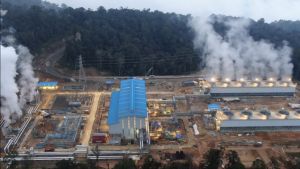JAKARTA - The Asian Development Bank (ADB) predicts that the economic growth of developing countries in Asia and the Pacific is projected to remain strong. Although the risks to these prospects are increasing.
Asian Development Outlook September 2023 estimates that developing countries in the region will grow by 4.7 percent this year, slightly revised down from the previous projection of 4.8 percent. Estimates of growth for next year are maintained at 4.8 percent.
The report states that growth in the region was quite good in the first half of this year, driven by China's reopening, healthy domestic demand, increased tourism, strong remittances, and stable financial conditions, even as weaker global prospects ease export demand.
The report estimates China's growth of 4.9 percent this year from 5.0 percent in the April report, shows ADB's confidence in the health of its largest economic member countries.
Improved tourism, a formidable service sector, healthy money transfers to the region, and improving financial conditions all help support economic activity, and inflation is receding in most countries after reaching its peak last year.
"Evolved countries in Asia continue to grow rapidly, and inflationary pressures are starting to ease," ADB chief economist Albert Park quoted Antara as saying.
Among the growing sub-districts in Asia, Southeast Asia's growth forecast fell to 4.6 percent this year from its previous projection of 4.7 percent due to the weakening demand for exports; South Asia was also reduced by 0.1 percentage points to 5.4 percent; East Asia was cut to 4.4 percent from 4.6 percent.
The report raised growth forecasts for the Case and Central Asia to 4.6 percent, and the Pacific to 3.5 percent.
However, the report warns that the high global interest rate has increased the risk of financial instability. Sporadic supply disruptions due to the continuing Russia-Ukraine conflict, export restrictions, and increased risk of drought and flooding caused by El Nino once again could trigger rising food prices and challenge food security.
SEE ALSO:
Park said that several central banks in the region have started lowering interest rates, which will help increase growth. The government needs to be aware of the various risks facing the region, and warn that negative risks to global economic prospects are increasing, Park added.
Inflation is expected to continue to decline towards pre-pandemic levels, from 4.4 percent in 2022 to 3.6 percent this year and 3.5 percent next year, Park said.
"This is mostly due to low inflation in China, as well as stable food and energy prices," the report said.
The English, Chinese, Japanese, Arabic, and French versions are automatically generated by the AI. So there may still be inaccuracies in translating, please always see Indonesian as our main language. (system supported by DigitalSiber.id)
















